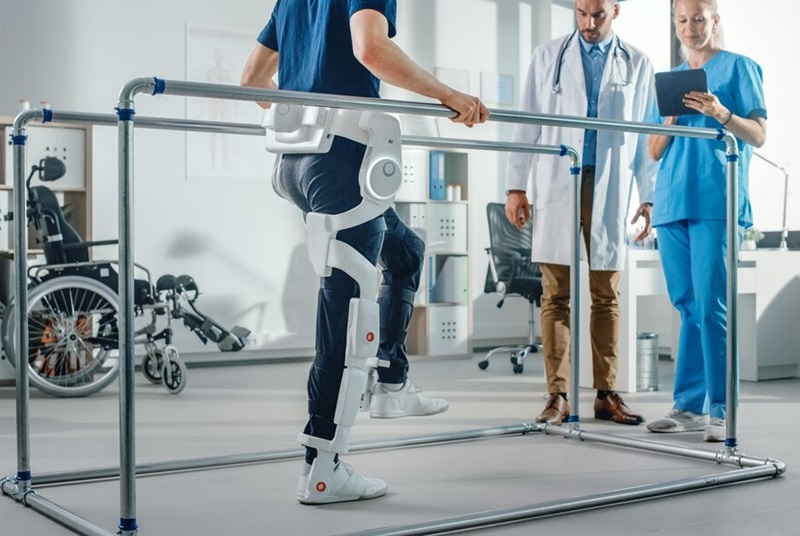One such advancement that has gained substantial attention is the integration of robotics into THA. Robotics in THA offers precision, accuracy, and personalized surgical plans, promising improved patient outcomes and reduced complications. This article delves into the current role of robotics in Total Hip Arthroplasty, exploring its benefits, technological aspects, limitations, the right hip replacement surgeons and future prospects.
The Evolution of Robotics in Orthopedics: Hip Replacement Surgeon
The integration of robotic hip replacement in thane into orthopedic surgeries is a result of continuous advancements in technology and the pursuit of enhancing surgical precision. Initially, computer navigation systems were introduced to improve the accuracy of implant positioning. These systems provided real-time feedback to surgeons during surgery, aiding in better decision-making regarding implant alignment and placement.
However, traditional computer navigation had its limitations, primarily related to its two-dimensional representation and lack of real-time haptic feedback. This led to the development of robotic-assisted systems, aiming to address these shortcomings and revolutionize the precision and personalization of orthopedic procedures.
Robotic Technology in Total Robotic Hip Replacement In Thane Arthroplasty
Robotic systems used in THA typically consist of a robotic arm, a computer interface, and imaging technology. Pre-operative planning involves the creation of a patient-specific surgical plan, mapping out the ideal positioning and alignment of the implants. This plan is then transferred to the robotic arm, allowing for real-time adjustments and feedback during the surgery.
Key Technological Aspects:
- Preoperative Planning: Advanced imaging technologies such as CT scans are utilized to create a three-dimensional model of the patient’s hip joint. Surgeons can then plan the surgery in a virtual environment, determining the optimal position for implants.
- Real-time Feedback: The robotic arm provides real-time feedback to the surgeon, enabling precise execution of the surgical plan and allowing adjustments if necessary during the procedure.
- Haptic Guidance: Some robotic systems offer haptic guidance, providing a sense of touch or resistance to the surgeon, further enhancing precision during bone preparation and implant placement.
- Navigation and Control: Surgeons control the robotic arm using a specialized interface, allowing for seamless interaction and execution of the surgical plan.
Benefits of Robotics in Total Hip Arthroplasty
The integration of robotics in THA offers a plethora of advantages, both for the surgeon and the patient. These benefits include:
- Enhanced Precision: Robotics aid in achieving a higher level of accuracy in implant positioning and alignment, contributing to better long-term outcomes.
- Personalized Surgical Plans: Each surgical plan is tailored to the patient’s unique anatomy, ensuring a customized approach to the surgery.
- Reduced Blood Loss and Tissue Trauma: The precision of robotics minimizes tissue trauma and blood loss, promoting faster recovery and shorter hospital stays.
- Improved Implant Longevity: Accurate implant positioning and alignment can lead to improved longevity and performance of the hip replacement surgeon for the implant.
- Minimized Complications: With the precision offered by robotics, the risk of complications such as dislocation, leg length discrepancy, and implant loosening is significantly reduced.
Limitations and Challenges
Despite the promising advancements, robotic-assisted THA has certain limitations and challenges:
- Cost: Robotic systems are expensive to acquire and maintain, making them a significant investment for healthcare facilities.
- Learning Curve: Surgeons require extensive training and a learning curve to master the operation of robotic systems effectively.
- Access and Availability: The accessibility of robotic-assisted THA may be limited to specialized centers, impacting widespread adoption.
Future Prospects and Conclusion
The role of robotics in Total Hip Arthroplasty is continuously evolving. Future developments aim to address current limitations, enhance the user-friendliness of robotic systems, and increase their accessibility to a broader range of healthcare settings. Machine learning and artificial intelligence integration hold promise in optimizing surgical plans and predicting patient-specific outcomes, further advancing the field of robotic-assisted orthopedic surgeries.
The integration of robotics in Total Hip Arthroplasty represents a significant advancement in orthopedic surgery, enhancing precision, improving outcomes, and ultimately benefiting patients. As technology continues to progress, robotic-assisted THA is expected to become more widespread, contributing to the continued advancement of orthopedic care.
The Final Verdict
In the ever-evolving landscape of orthopedic surgery, robotics has emerged as a revolutionary tool in the domain of Total Hip Arthroplasty (THA). The current role of robotics in THA showcases a promising trajectory toward precision, personalization, and enhanced patient outcomes. As technology continues to advance, the integration of robotics provides surgeons with unprecedented levels of accuracy and real-time feedback during surgery.
The advantages of reduced complications, minimized tissue trauma, and improved implant longevity demonstrate the positive impact of robotics on the field. While challenges such as cost and a learning curve persist, ongoing research and technological innovations promise to further refine and expand the role of robotics in THA. In the foreseeable future, robotics is poised to redefine the standard of care in hip replacement surgeries by best hip replacement surgeons, ultimately benefiting individuals seeking a better quality of life through orthopedic interventions.











